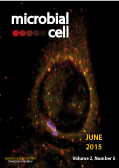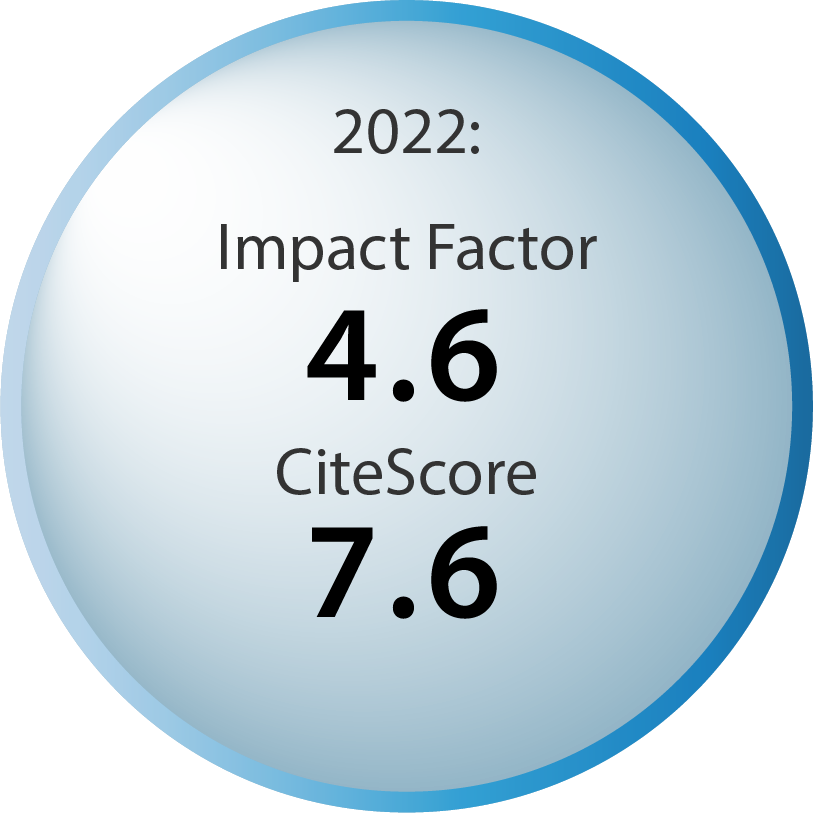Table of contents
Volume 2, Issue 6, pp. 174 - 215, June 2015
Cover: The cover image illustrates the degradation of
Salmonella Typhimurium via xenophagy: S. Typhimurium is captured and degraded in acidic autolysosomes (red vesicles). Image by Pauline Verlhac and Mathias Faure (University of Lyon, France); modified by MIC. The cover is published under the Creative Commons Attribution (CC BY) license.
Enlarge issue cover
Toxoplasma control of host apoptosis: the art of not biting too hard the hand that feeds you
Sébastien Besteiro
News and thoughts |
page 178-181 | 10.15698/mic2015.06.209 | Full text | PDF |
Abstract
Toxoplasma gondii is an obligate intracellular parasite that is able to infect a multitude of different vertebrate hosts and can survive in virtually any nucleated cell. The tachyzoite form of the parasite is very efficient at actively invading its host cells, where it establishes itself in a parasitophorous vacuole (PV). In this non fusogenic vacuole, the parasite is able to escape degradation from the endolysosomal system [1]. The host endoplasmic reticulum and mitochondria are recruited to the periphery of the PV membrane shortly after invasion (Fig. 1), possibly as a source of nutrient for the parasite [2]. Tachyzoites will subsequently undergo multiple rounds of cell division before being able to egress and, as a consequence, lyse the host cell (Fig. 1).
Coordinate responses to alkaline pH stress in budding yeast
Albert Serra-Cardona, David Canadell and Joaquín Ariño
Reviews |
page 182-196 | 10.15698/mic2015.06.205 | Full text | PDF |
Abstract
Alkalinization of the medium represents a stress condition for the budding yeast Saccharomyces cerevisiae to which this organism responds with profound remodeling of gene expression. This is the result of the modulation of a substantial number of signaling pathways whose participation in the alkaline response has been elucidated within the last ten years. These regulatory inputs involve not only the conserved Rim101/PacC pathway, but also the calcium-activated phosphatase calcineurin, the Wsc1-Pkc1-Slt2 MAP kinase, the Snf1 and PKA kinases and oxidative stress-response pathways. The uptake of many nutrients is perturbed by alkalinization of the environment and, consequently, an impact on phosphate, iron/copper and glucose homeostatic mechanisms can also be observed. The analysis of available data highlights cases in which diverse signaling pathways are integrated in the gene promoter to shape the appropriate response pattern. Thus, the expression of different genes sharing the same signaling network can be coordinated, allowing functional coupling of their gene products.
Polyamines directly promote antizyme-mediated degradation of ornithine decarboxylase by the proteasome
R. Roshini Beenukumar, Daniela Gödderz, R. Palanimurugan, and R. Jürgen Dohmen
Research Articles |
page 197-205 | 10.15698/mic2015.06.206 | Full text | PDF |
Abstract
Ornithine decarboxylase (ODC), a ubiquitin-independent substrate of the proteasome, is a homodimeric protein with a rate-limiting function in polyamine biosynthesis. Polyamines regulate ODC levels by a feedback mechanism mediated by ODC antizyme (OAZ). Higher cellular polyamine levels trigger the synthesis of OAZ and also inhibit its ubiquitin-dependent proteasomal degradation. OAZ binds ODC monomers and targets them to the proteasome. Here, we report that polyamines, aside from their role in the control of OAZ synthesis and stability, directly enhance OAZ-mediated ODC degradation by the proteasome. Using a stable mutant of OAZ, we show that polyamines promote ODC degradation in Saccharomyces cerevisiae cells even when OAZ levels are not changed. Furthermore, polyamines stimulated the in vitro degradation of ODC by the proteasome in a reconstituted system using purified components. In these assays, spermine shows a greater effect than spermidine. By contrast, polyamines do not have any stimulatory effect on the degradation of ubiquitin-dependent substrates.
Struggling for breath in Sherbrooke: 1st Symposium on “One mitochondrion, many diseases” in Sherbrooke, Québec, Canada, March 11th, 2015
Ralf J. Braun, Verónica I. Dumit, Cécile Monpays, Xavier Roucou, Daniel Serrano, Julie St-Pierre, Paula J. Waters, Ian Bates, and Denis Gris
Meeting Reports |
page 208-213 | 10.15698/mic2015.06.207 | Full text | PDF |
Abstract
On March 11th 2015, when the never-ending bitterly cold Canadian winter made a short break, 100 scientists from Québec and Germany came together in Sherbrooke in southern Québec to attend the 1st symposium on “One mitochondrion, many diseases”. Under the impression of the beauty of the frozen local rivers Saint-François and Magog, the researchers presented and discussed their recent data on the pivotal roles of mitochondria in various diseases, including neurodegeneration, cancer, schizophrenia, respiratory chain, and inflammatory disorders. In this way, the participants and attendees of the symposium got a broad overview of common and distinct mechanisms of mitochondrial (dys)functions underlying various diseases.
Handcuffs for bacteria – NDP52 orchestrates xenophagy of intracellular Salmonella
Pauline Verlhac, Christophe Viret and Mathias Faure
Microreviews |
page 214-215 | 10.15698/mic2015.06.208 | Full text | PDF |
Abstract
Eukaryotic cells can selectively target and degrade intracellular pathogens using autophagy, a process referred to as xenophagy. This selectivity is controlled by proteins called autophagy receptors, which can recognise pathogens and address them to the autophagy machinery. Among them, NDP52 can recognise Salmonella Typhimurium on the one hand and the ATG8 family member LC3C on the other hand, thus allowing the docking of the bacteria to a growing autophagosome. Additionally, we recently reported that NDP52 is involved in the maturation of the bacteria-containing autophagosome and hence necessary for the ultimate degradation of the bacteria. These two functions of NDP52 are independent as they rely on distinct binding domains and protein partners. Therefore, NDP52 plays a dual role during xenophagy, first by targeting the bacteria to the autophagy machinery and then by regulating its degradation.










